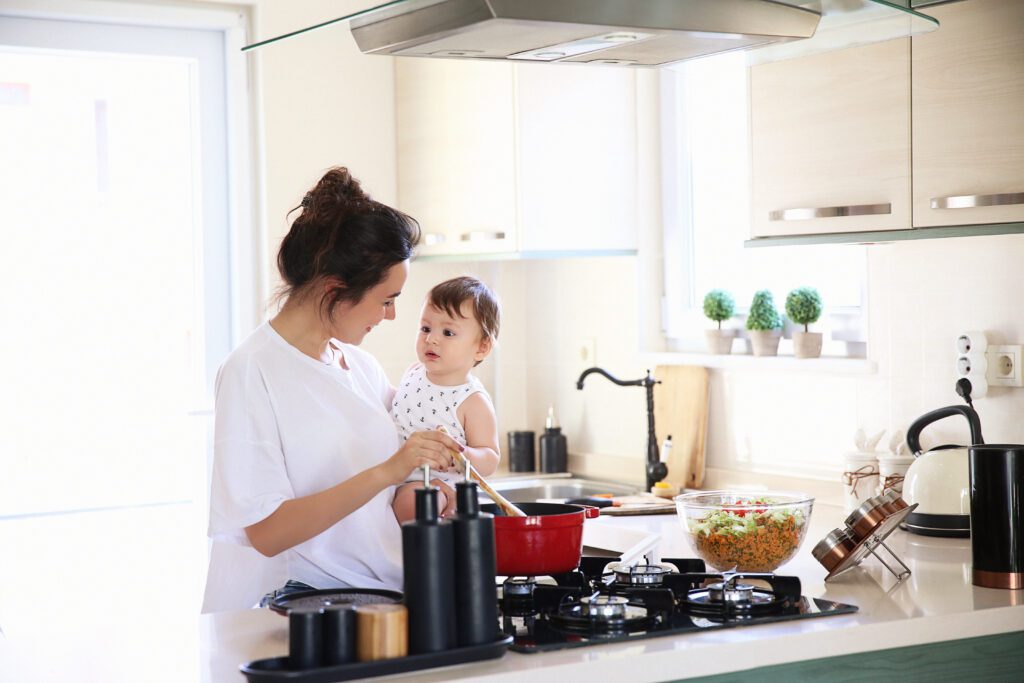Hidden Air Pollution in Our Home: The Importance of Ventilation

By: Linda Kafka | April 2021
Outdoor air has been regulated for years, but what about the indoor air pollutants that have been hiding in our homes for decades? Apart from the bathrooms, even the kitchens have been proved to contain these harmful particles. Cooking, cleaning, and other household activities are majorly generating significant levels of particulate chemicals and Volatile Organic Compounds (VOC) inside the home while hindering the indoor air quality. Frying food on the stove, using a toaster, mopping a floor, or mainly even breathing indoors can lead to a major rise in the levels of indoor pollution. According to Environmental Protection Agency, the air we breathe indoors can be five times as polluted as the outdoor air – and that is simply because enclosed areas tend to build up more pollutants than an open space.
In a recent project done by researchers from Harvard Data Science Initiative cooked a thanksgiving dinner in a 1,200-square-foot manufactured home to find out the possible pollutants and particulate matters in the indoor air. Later, it was discovered that the levels of fine particulate matter in the home had reached around 285 micrograms per cubic meter. Another research found that these regular indoor activities may give rise to the substances such as Volatile Organic Compounds (VOCs), Carbon Dioxide, Nitric Oxide, and fine particulate matter that end up harming the indoor air. Gas stoves are a major cause of a huge amount of air pollution in kitchens. They emit nitrogen dioxide when the fuel is burned at a very high temperature. When mixed with the air, they produce toxic organic nitrates and nitric acid that can largely cause irritation in the lungs while lowering the resistance to respiratory disorders such as influenza. According to research by Environmental Protection Agency, it is proved that frequent exposure to high concentrations of these particles may cause respiratory diseases in children.
Hence, it is of utmost importance that the kitchen is well ventilated at all times – mainly, during the cooking process and as well as afterward. And just in case if the food gets burned during cooking, it further leads to harmful emissions such as particulate matter, Nitrogen dioxide, formaldehyde, and carbon monoxide that may be extremely toxic for the residents to breathe. It will be quite surprising to know that even the basic tasks such as boiling water on the stovetop flame can end up producing high levels of gaseous air pollutants and suspended particulates indoors. Thus, it is crucial to install a high-quality ventilation fan and a chimney or a range hood, or otherwise open the windows wide open during cooking to let out these harmful particles as much as possible.
A report published in 2001 by California Air Resources Board (CARB) stated that the cooking of fried chicken dinner on a gas stove can produce an average of 400 parts per billion of Nitrogen Dioxide. And this level is significantly higher as compared to the standards that measure around 250 parts per billion. On the other hand, ovens – whether gas or electric have the equal potential to produce pollutants such as Formaldehyde and Particulate Matter during regular use. A few activities that cause the most indoor air pollution are the deep frying and browning of food products. Mainly, heating ingredients at a high temperature with oil or fat concentration may emit Polycyclic Aromatic Hydrocarbons (PAC) and Particulate Matter (PM 2.5 and PM 10) that majorly cause eye and respiratory irritation.
Do you smell that pleasing aroma from the foods when they are getting grilled or simply toasted? Well, yes! That is when the compounds such as brown carbon (particulate matter) and VOCs are being released. Moreover, even multi-tasking in the kitchen may seem obviously efficient and timeconsuming – but the fact is that this combination may exponentially decrease the potential air quality of your kitchen. For instance, cooking with teriyaki sauce and simultaneously cleaning with bleach may produce toxins such as chloramines that are known to cause respiratory inflammation. Or also cleaning with bleach while using a gas burner simultaneously may produce nitryl chloride that causes coastal smog formation. Some of the common VOCs present in the kitchen indoor air are benzene, xylene, tetrachloroethylene, methylene chloride, ethylene glycol, and toluene.
It is crucial to maintaining the air quality of the kitchen since there is quite some considerable time spent there. So, step by step, no matter how small they are, can help increase the quality of your kitchen’s indoor air. First and foremost, gas combustion produces PM2.5 which is almost double what an electric stove produces (PM2.5 is one of the deadliest air pollutants). Another major gas found is CO that is caused by gas stoves in kitchens that are poorly ventilated. This gas has been proved to cause cardiovascular diseases amongst the vulnerable populations that have existing coronary heart diseases. To annul this issue, it is important to prioritize ventilation primarily in the kitchens.
Firstly, it is important to use exhaust hoods and fans. Secondly, it is notable to check whether the existing hood doesn’t end up recirculating air rather than completely venting outside. And thirdly, checking the performance for hoods is noteworthy. It should mainly expel almost 98 percent of the harmful emissions existing in the air. Another way to increase ventilation is by simply running the entire HVAC system while cooking in the kitchen. Hence, it is definitely a given that human health and wellness are primary. And keeping in mind the fact that homeowners tend to spend a lot of their time cooking – it further becomes primary. To prioritize ventilation and efficiently optimizing the use of kitchen equipment is necessary to propagate a healthy indoor environment.
